 Website:
RWD Life Science
Website:
RWD Life Science
Catalog excerpts
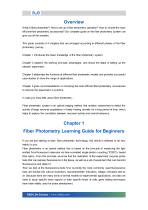
Overview What is fiber photometry? How to set up a fiber photometry operation? How to choose the most efficient fiber photometry accessories? Our complete guide on the fiber photometry system can give you all the answers. This guide consists of 4 chapters that are arranged according to different phases of the fiber photometry journey. Chapter 1 introduces the basic knowledge of the fiber photometry system. Chapter 2 explains the working principle, advantages, and shows the steps of setting up the relevant experiment. Chapter 3 elaborates the functions of different fiber photometry models...
Open the catalog to page 2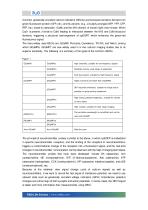
Common genetically encoded calcium indicators (GECIs) are fluorescent proteins derived from green fluorescent protein (GFP, etc.) and its variants (e.g., circularly arranged GFP, YFP, CFP, RFP, etc.) fused to calmodulin (CaM) and the M13 domain of myosin light chain kinase. When Ca2+ is present, it binds to CaM, leading to interaction between the M13 and CaM structural domains, triggering a structural rearrangement of cpEGFP, which enhances the green/red fluorescence signal. The more widely used GECIs are: GCaMP, Pericams, Cameleons, TN-XXL and Twitch, among which GCaMP6, GCaMP7 are now...
Open the catalog to page 3
After understanding these fluorescent indicators, we need to be clear on how to express the indicators into the animal. This genetically encoded probe can be expressed in cells or mouse brain by viral injection, transfection, animal cross and other technical means. Take the brain stereotaxic injection study as an example: 1. choose the appropriate virus tool (contains the information encoded by the indicator) to inject into a specific location; 2. implant optical fiber for transmitting excitation light and collecting emission light; 3. wait for 2-3 weeks for the virus to be expressed and...
Open the catalog to page 4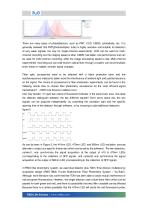
There are many types of photodetectors, such as PMT, CCD, CMOS, photodiode, etc. It is generally believed that PMT(photomultiplier tube) is highly sensitive and suitable for detection of very weak signals, but only for single-channel experiments; CCD can be used for multi channel recording, but the imaging speed is slow; CMOS has better cost performance and can be used for multi-channel recording, while the image processing speed is fast. Multi-channel experimental recording can use multi-branch optical fiber, through a system can record multiple brain areas or multiple animals signal...
Open the catalog to page 5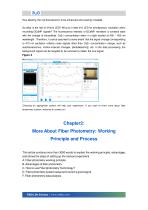
thus allowing the red fluorescence to be enhanced and causing crosstalk. So what is the role of 410nm LED? Why do I need 410 LED for simultaneous excitation when recording GCaMP signals? The fluorescence intensity of GCaMP maintains a constant state with the change of intracellular Ca2+ concentration when it is light excited at 405 – 420 nm wavelength. Therefore, it can be assumed to some extent that the signal change corresponding to 410 nm excitation reflects noise signals other than Ca2+ concentration change, such as autofluorescence, motion-induced changes, photobleaching, etc. In the...
Open the catalog to page 6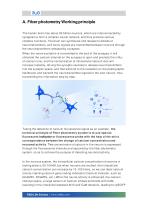
A. Fiber photometry Working principle T he human brain has about 90 billion neurons, which are interconnected by synapses to form a complex neural network, and thus produce various complex functions. T he brain can synthesize and release hundreds of neurotransmitters, and nerve signals are transmitted between neurons through the neurotransmitters released by synapses. When the nerve excitation is transmitted to the end of the synapse, it will stimulate the calcium channel on the synapse to open and promote the influx of calcium ions, and the concentration of intracellular calcium ions will...
Open the catalog to page 7
structural rearrangement, thus enhancing the green fluorescence signal. ( Figure 2) T herefore, we can characterize the activity of neurons by detecting the changes of calcium signals, and then study the correlation between neuronal activity and animal behavior, and explore the regulatory mechanism behind complex behavior. The principle of fibe r photom e try for the de te ction of ne urotransmitter signals is the sam e as abov e . A new series of genetically encodable fluorescent probes, called GRAB (GPCR activation-based), has been developed. By embedding a fluorescent protein (cpEGFP)...
Open the catalog to page 8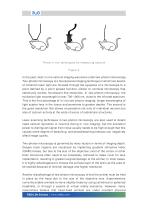
T hree in vivo techniques for measuring calcium Figure 3 In the past, most in vivo calcium imaging was done under two -photon microscopy. Two-photon microscopy is a fluorescence imaging technique in which two beams of coherent laser light are focused through the eyepiece of a microscope to a point defined by a point spread function, similar to confocal microscopy that selectively excites fluorescent-like molecules. In two-photon microscopy, the excitation light wavelength is near 700-1000 nm, close to the infrared spectrum. T his is the first advantage of in vivo two -photon imaging: longer...
Open the catalog to page 9
restraint and emotional stress during the experiment, and therefore cannot demonstrate that neuronal responses to the outside world are equivalent under virtual reality and free exploration. More importantly, many social behaviors, such as parent-child care, mating and fighting, cannot be studied with headfixed experiments. Microscope-based single-photon in vivo calcium imaging allows researchers to record calcium signals from free-ranging animals. T he microscope accomplishes the observation of population neuronal activity over long periods of time by connecting to a gradient refractive...
Open the catalog to page 10
well as the detection of circuit-level neural signals in pathological states. Reference: 1. Kasey S Girven, Dennis Ryan Sparta. Probing deep brain circuitry: New advances in in vivo calcium measurement strategies[J]. ACS Chem Neurosci. 2017 Feb 15;8(2):243-251. 2. Gunaydin LA, Grosenick L, Finkelstein JC, et al. Natural neural projection dynamics underlying social behavior[J]. Cell, 2014, 157(7): 1535-51. C. How to use Fiber photometry Technology Fiber photometry is performed in much the same way as optogenetics, where a fluorescent indicator (virus) is injected into a specific part of the...
Open the catalog to page 11
6. Clean the skin over the skull with 3% H2O2(Or iodine volts) and open the skin to expose the skull. 7. Gently apply 3% H2O2 to the surface of the skull and remove the covering tissue. Clearly expose the bregma and lambda points.
Open the catalog to page 12All RWD Life Science catalogs and technical brochures
-
RWD Gradient Thermal Cycler
2 Pages
-
Rotary Microtomes S710
2 Pages
-
RWD Osmotic infusion Pump
2 Pages
-
RWD Syringe Pump R462
1 Pages
-
RWD Rotating impactor 68099Ⅱ
2 Pages
-
RWD Microcentrifuge M1324R
2 Pages
-
RWD Infusion imager RFLSI Ⅲ
2 Pages
-
RWD Surgical Instruments
18 Pages
-
RWD Veterinary medical equipment
32 Pages
-
RWD R415 Animal Ventilatorr
1 Pages
Archived catalogs
-
PRODUCT CATALOGUE 2017
51 Pages
-
2015 Product Catalogue
44 Pages


















































































